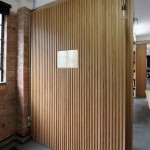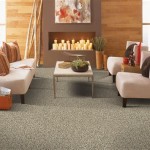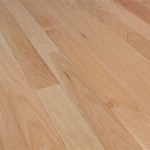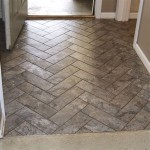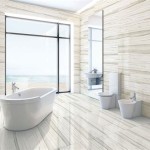White Washed Engineered Wood Flooring
White washed engineered wood flooring offers a bright, airy aesthetic that complements various interior design styles. This flooring option combines the classic look of hardwood with the practicality and stability of engineered construction. Understanding its composition, benefits, and installation process can help homeowners make informed decisions when choosing flooring for their homes.
Construction and Composition
Engineered wood flooring is constructed from multiple layers of wood, unlike solid hardwood which is milled from a single piece of lumber. The core layer is typically made of plywood or high-density fiberboard (HDF), providing dimensional stability and resistance to warping. Atop the core sits a thin veneer of real hardwood, which gives the flooring its authentic look and feel. This veneer is then finished with a protective layer and, in the case of white washed flooring, a white wash treatment.
The white wash effect is achieved by applying a thin, translucent layer of white pigment, allowing the natural wood grain to show through. This technique creates a light and airy feel while retaining the character of the wood. Various levels of whitewashing are available, from subtle hints of white to more opaque finishes. The specific wood species used for the veneer also affects the final appearance. Oak, pine, and ash are popular choices for white washed engineered wood flooring due to their attractive grain patterns and ability to accept the white wash treatment effectively.
Benefits of White Washed Engineered Wood Flooring
White washed engineered wood flooring offers several advantages over other flooring options. Its layered construction makes it more resistant to moisture and temperature fluctuations than solid hardwood, making it suitable for installation in areas with higher humidity levels, such as kitchens and basements. The engineered construction also contributes to its stability, reducing the likelihood of warping or buckling over time.
Aesthetically, white washed floors brighten a room, creating a sense of spaciousness and airiness. This makes them particularly well-suited for smaller rooms or spaces with limited natural light. The light color also complements a wide range of design styles, from modern minimalist to farmhouse chic. It provides a neutral backdrop that can easily be paired with various furniture and décor choices.
Another advantage of engineered wood flooring is its relatively easy installation. Many products come with click-lock systems, allowing for a faster and less complicated installation process compared to traditional tongue-and-groove methods. This can save both time and money on installation costs. Furthermore, engineered wood flooring can be installed over a variety of subfloors, including concrete, making it a versatile flooring solution.
Installation and Maintenance
Proper installation is crucial for the longevity and performance of white washed engineered wood flooring. Acclimating the flooring to the environment before installation is essential to prevent expansion and contraction issues later. This involves storing the unopened boxes of flooring in the room where they will be installed for a specified period, allowing the wood to adjust to the temperature and humidity levels.
The subfloor must be clean, level, and dry before installation begins. Any imperfections in the subfloor can affect the stability of the flooring and may void warranties. Depending on the chosen installation method, underlayment may be required to provide additional cushioning, sound reduction, and moisture protection.
Maintaining white washed engineered wood flooring is relatively straightforward. Regular sweeping or vacuuming with a soft brush attachment helps remove dirt and debris that can scratch the surface. Occasional damp mopping with a wood floor cleaner is recommended, but avoid excessive moisture. Standing water can seep into the seams and damage the flooring. Protective furniture pads can prevent scratches and dents, while area rugs in high-traffic areas can help prolong the life of the floor.
Addressing spills promptly is important to prevent staining. While the finish offers some protection, prolonged exposure to liquids can damage the wood. Using coasters under drinks and placing mats under pet food and water bowls can further protect the flooring from spills and stains.
Finally, periodically applying a wood floor polish designed for white washed finishes can help maintain its luster and protect the surface from wear and tear. Following these maintenance guidelines will help ensure the beauty and longevity of the white washed engineered wood flooring for years to come.

Antique And Aged French Oak Flooring Vintage Historic Decorative Materials A Division Of Pavé Tile Wood Stone Inc

Malibu Wide Plank Take Home Sample 7 5 In X Favale French Oak Water Resistant Wirebrushed Engineered Hardwood Flooring Hm 883068 The

Pantim Palladio White Wash Brushed Matte Engineered Hardwood Stone Tile Shoppe Inc

Natu White Washed Hickory 3 8 In T X 7 5 W Waterproof Wire Brushed Engineered Hardwood Flooring 19 4 Sqft Case Evc75hiww1900e The Home

7 1 2 Wide Planks Pantim Hardwood Flooring

Whitewashed Oak Luxury Vinyl Plank Flooring Ferma

Engineered Oak Winter Dawn Whitewash Lacquered Wood Flooring 20mm X 6mm 190mm

European Oak French Connection Vintage White Chevron Oil

Natu Take Home Sample Wide Plank Hickory W White Washed Engineered Hardwood Flooring 5 In X 7 Nf 689609 The

Natu Sample Xl Spc Wood Hickory White Washed Engineered Wirebrushed Waterproof And Water Resistant Hardwood Flooring In The Samples Department At Lowes Com

